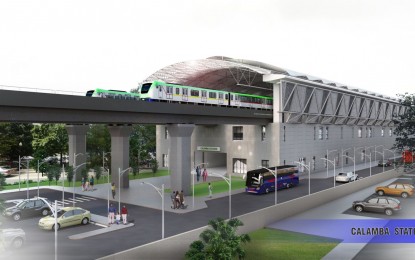
An artist's rendering of Philippine National Railways (PNR) Calamba Station (Photo courtesy of DOTr)
MANILA – Full-scale construction of the North-South Commuter Railway (NSCR) project is set to begin by February next year, an official of the Department of Transportation (DOTr) said Monday.
In a Laging Handa briefing, DOTr Undersecretary Timothy John Batan said the NSCR is the country’s largest railway project to date and the largest project funded by the Asian Development Bank, with the NSCR’s four recently signed contract packages worth a total of PHP91 billion.
“Mag-uumpisa na po ang ating mga pre-construction activities nito pong huling parte ng 2022 at ito pong February 2023 ay mag-uumpisa na po ang ating full scale na construction works (We’ll begin pre-construction activities by the latter part of 2022 and by February 2023, we’ll begin full scale construction works),” Batan said.
During its construction, he said the project is seen to create almost 10,000 jobs and boost the economic activity in project areas.
Homeowners and informal settlers affected by the NSCR, he said, will be compensated through coordination with social housing finance corporations, the National Housing Authority (NHA), and the Department of Human Settlements and Urban Development (DHSUD).
“Para po masigurado na ang atin pong mga maaapektuhan na mga kababayan ay magkakaroon po ng sapat na lilipatan at sapat po na kompensasyon para po sa kanilang mga tinamaan na mga ari-arian (This is to ensure that those affected by the project will have a suitable new home and adequate compensation for their property),” he said.
The NSCR is a 142-kilometer railway system that will stretch from Clark International Airport (CRK) in Pampanga all the way south to Calamba in Laguna with a travel time of about one hour and 45 minutes, about half the time it would take to drive.
Once operational, it is seen to have a daily passenger capacity of 350,000 and will have direct connections with other transportation projects such as the Metro Manila Subway. (PNA)
